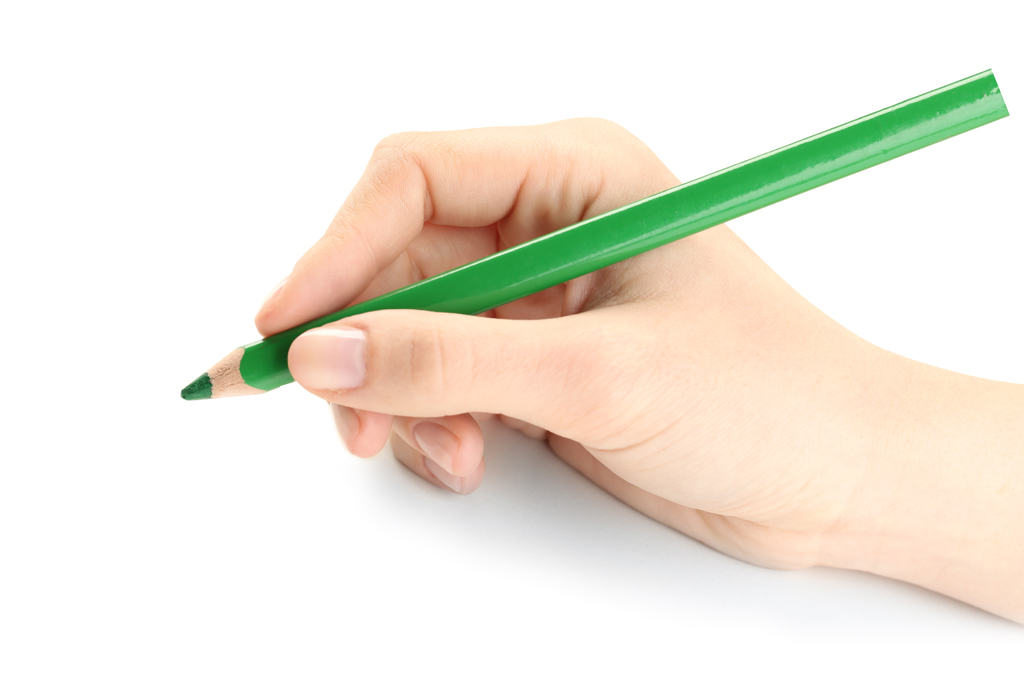The Best Way to Teach Children to Hold a Pencil
While learning to hold and correctly use a pencil is generally developed during preschool, children who don't form solid habits early could struggle in kindergarten and the early years of elementary school when penmanship becomes more crucial. Building good pencil habits early on will just make school a little easier in the long run. Here are a few tips to ease the process.

Provide Opportunities for Practice
It is very common for young children in the toddler and early preschool years to hold their writing and drawing utensils with a fist grip or another non-standard pencil grip. However, as they gain experience writing and drawing, that changes. As they move beyond scribbling to representational drawing and coloring inside the lines, most children naturally shift to a more traditional pencil grip (the 'pincer' grip). This allows them to have better control over their writing and drawing abilities and sustain writing or drawing comfortably for longer periods of time.
The pincer grip (or pincer grasp) is the grip that uses the pads of the index finger and thumb to hold an object. Children generally work towards this correct grip with a little (or a lot of) practice, but a few exercises focused on fine motor skill development can help!
Do "The Pincer"
Try these activities to help develop the fine motor skills necessary to correctly hold a pencil between the thumb and index finger:
- Practice picking up small objects (seeds or small beans, as long as they don't present a choking hazard).
- Peel tape off of a table (try it, it really works!).
- Create string art (or any other activity with string or even fishing line).
- Play with clothespins (this works really well, too).
Like most things in life, it really comes down to practice. Make drawing and coloring materials readily available during the toddler and preschool years, along with reams of blank paper, to bring out their inner artist and develop some pretty fine motor skills in the process.
Your Child's Still Struggling? What to Do Next
However, in some cases, parents find that their children reach the age of five and are still holding their pencil with a non-standard grip. If this happens to your child, there are some strategies you can try to help them make the adjustment.
Start by correcting their pencil grip, helping to position their fingers correctly on the pencil. If your child still reverts to an incorrect pencil grip, a good next step is to try getting your child thicker “preschool” pencils. These thicker pencils are easier for young children to grasp correctly. If this doesn’t work, consider purchasing a commercial pencil grip tool. These plastic pieces slide onto your pencil and are meant to help your child hold their pencil correctly.
If your child reaches kindergarten age and is still holding their pencil with an incorrect grip, speak to your child's teacher about providing a little extra reinforcement at school. In most cases, children develop correct pencil grip naturally on their own but in some cases, early intervention to correct the issue can help head off problems down the road.
For more tips on preparing your child for kindergarten, visit our Kindergarten Readiness Test page. Explore our Kindergarten Readiness Checklist to ensure your child is on track. Learn more about the Kindergarten Curriculum and the Common Core State Standards for Kindergarten.
Additionally, consider exploring related blog posts like The Five Domains of Kindergarten Readiness and Three Early Childhood Writing Activities for more insights and tips.